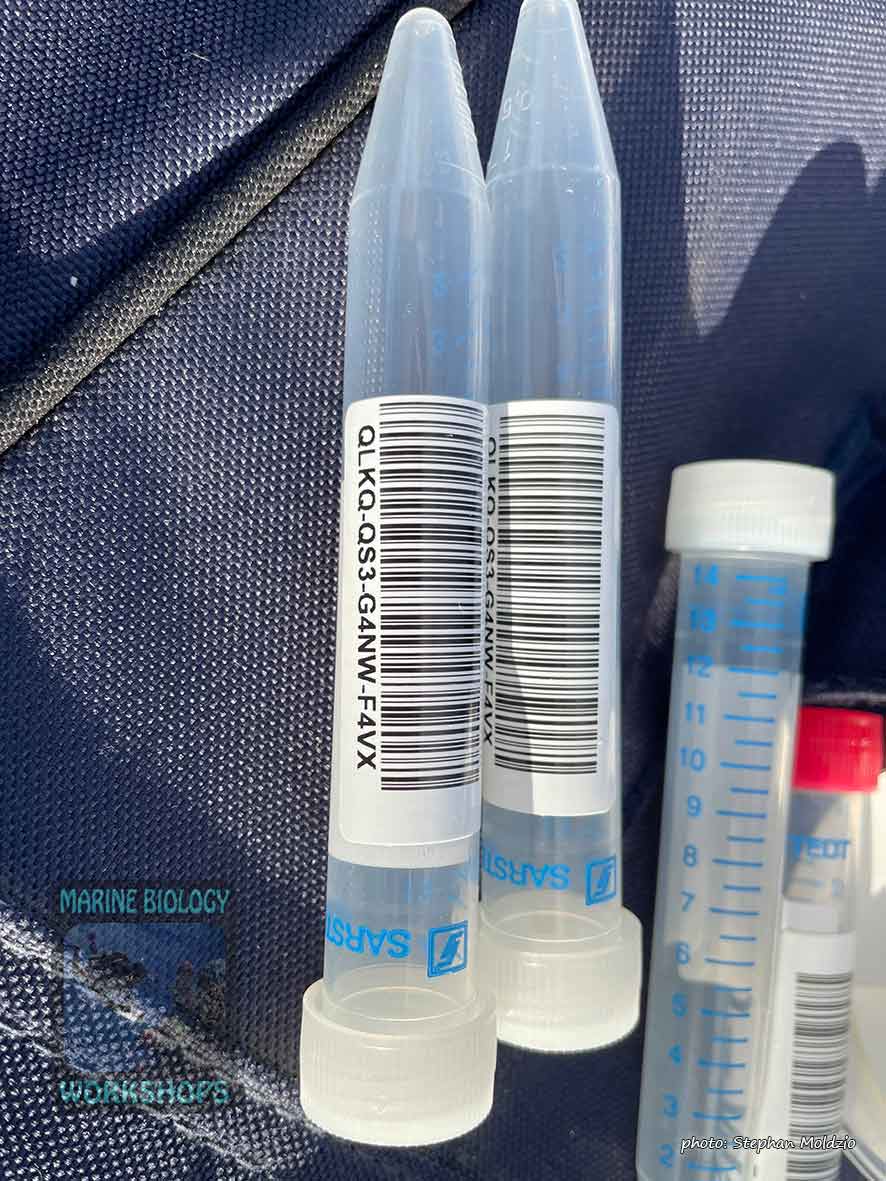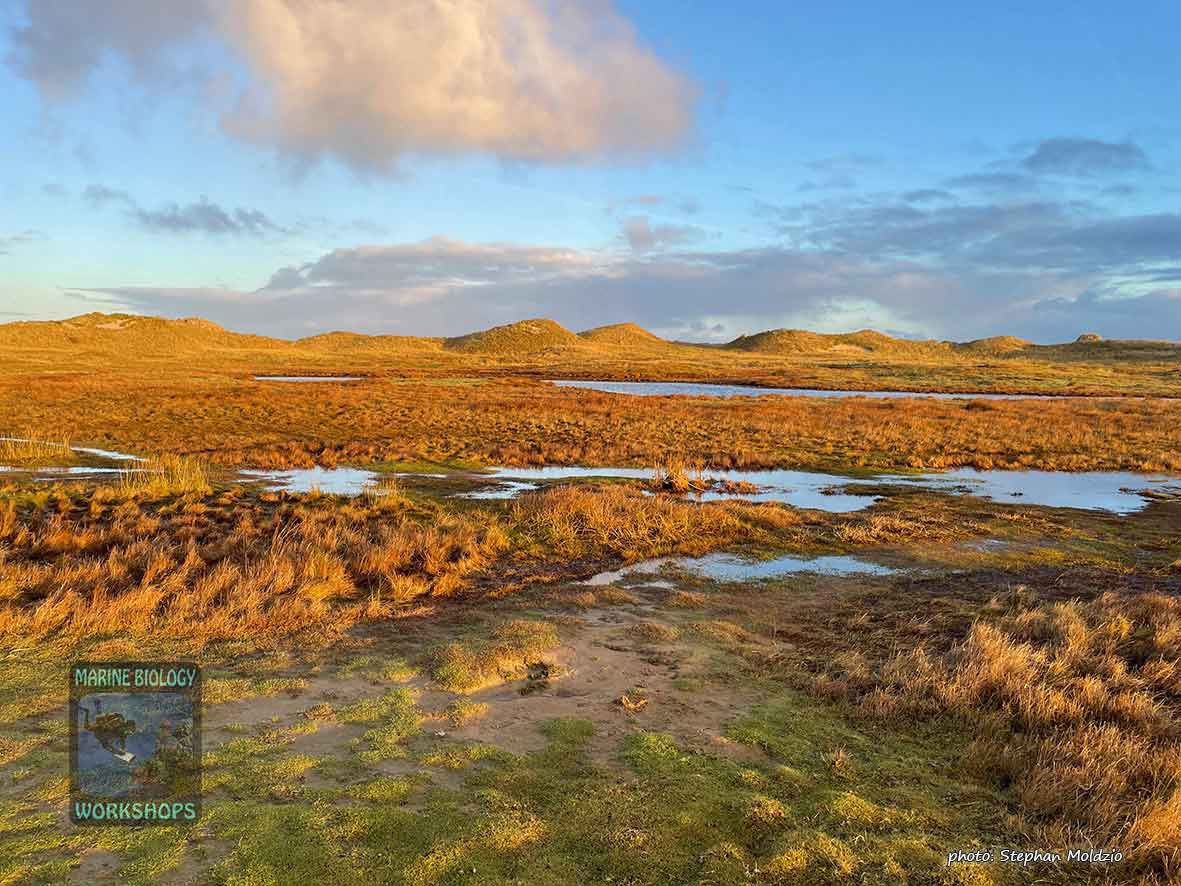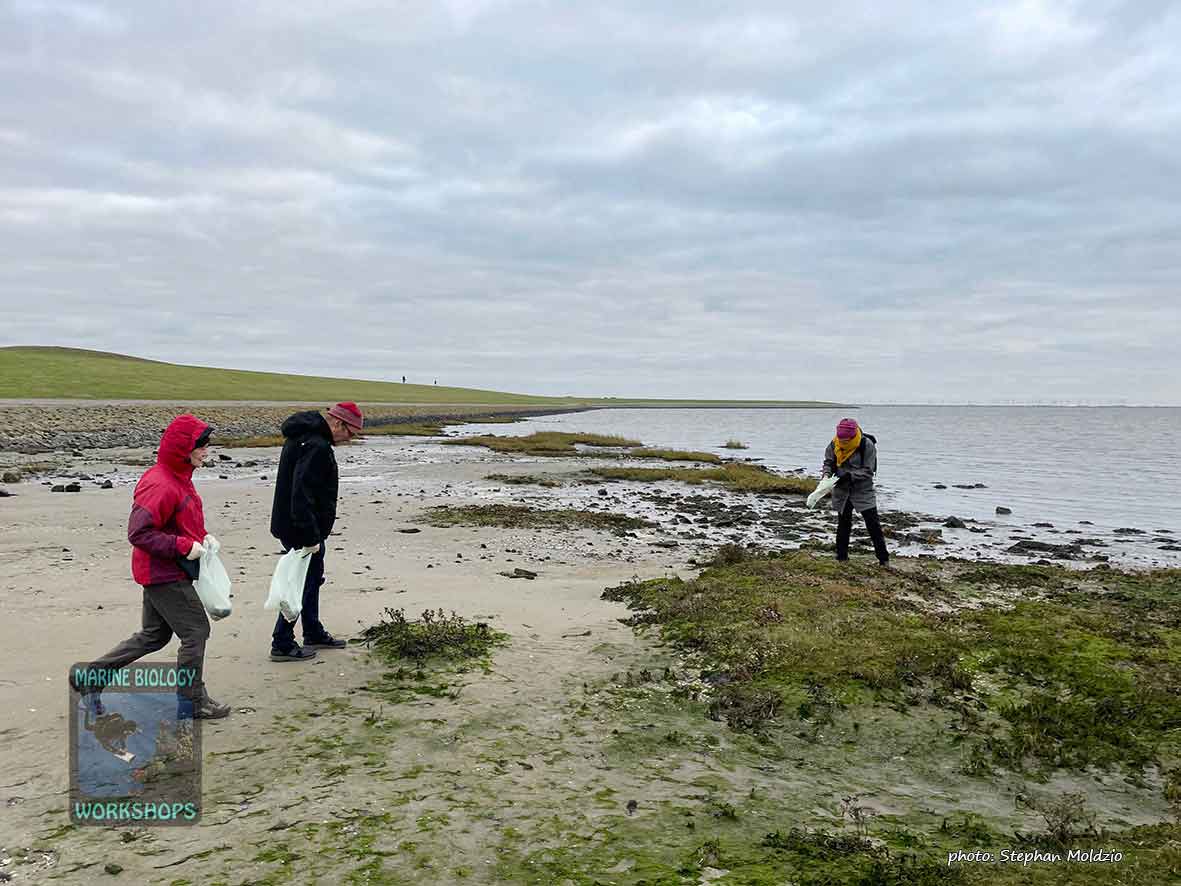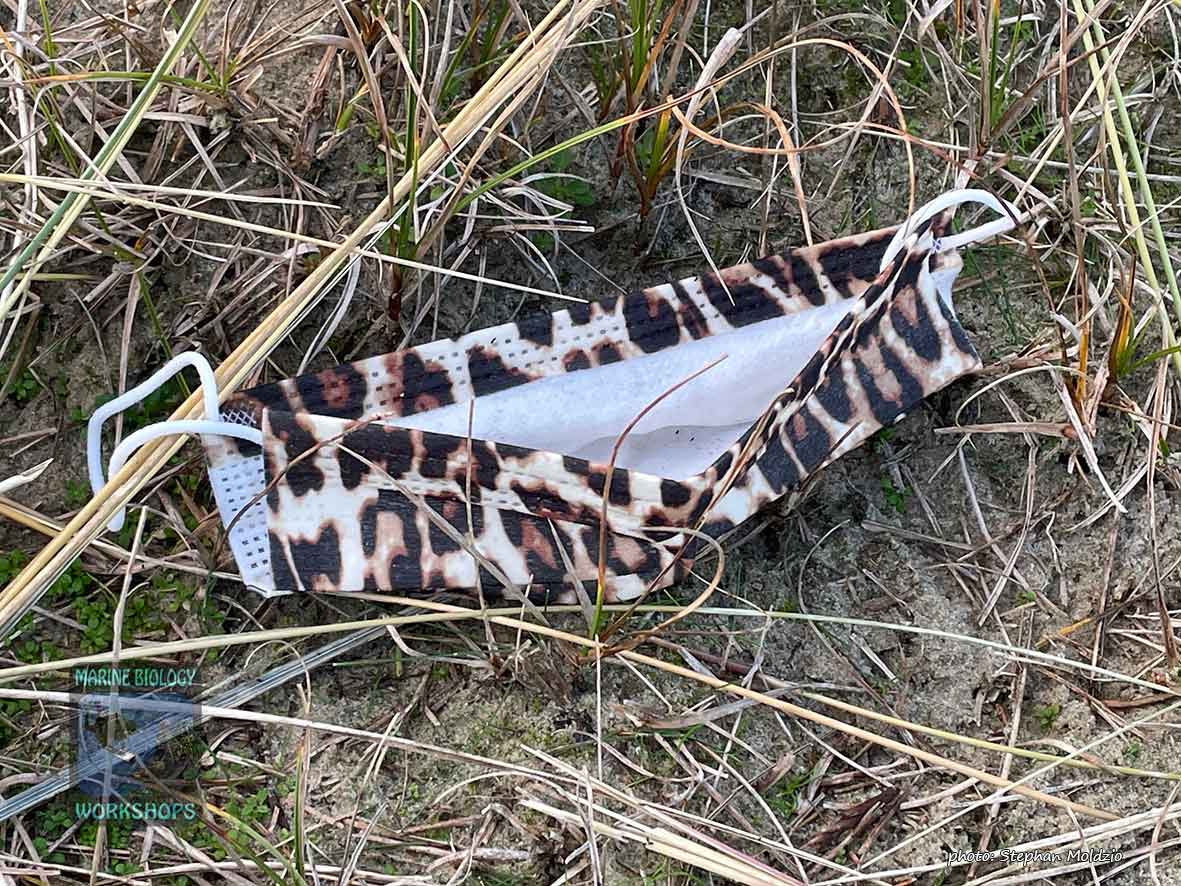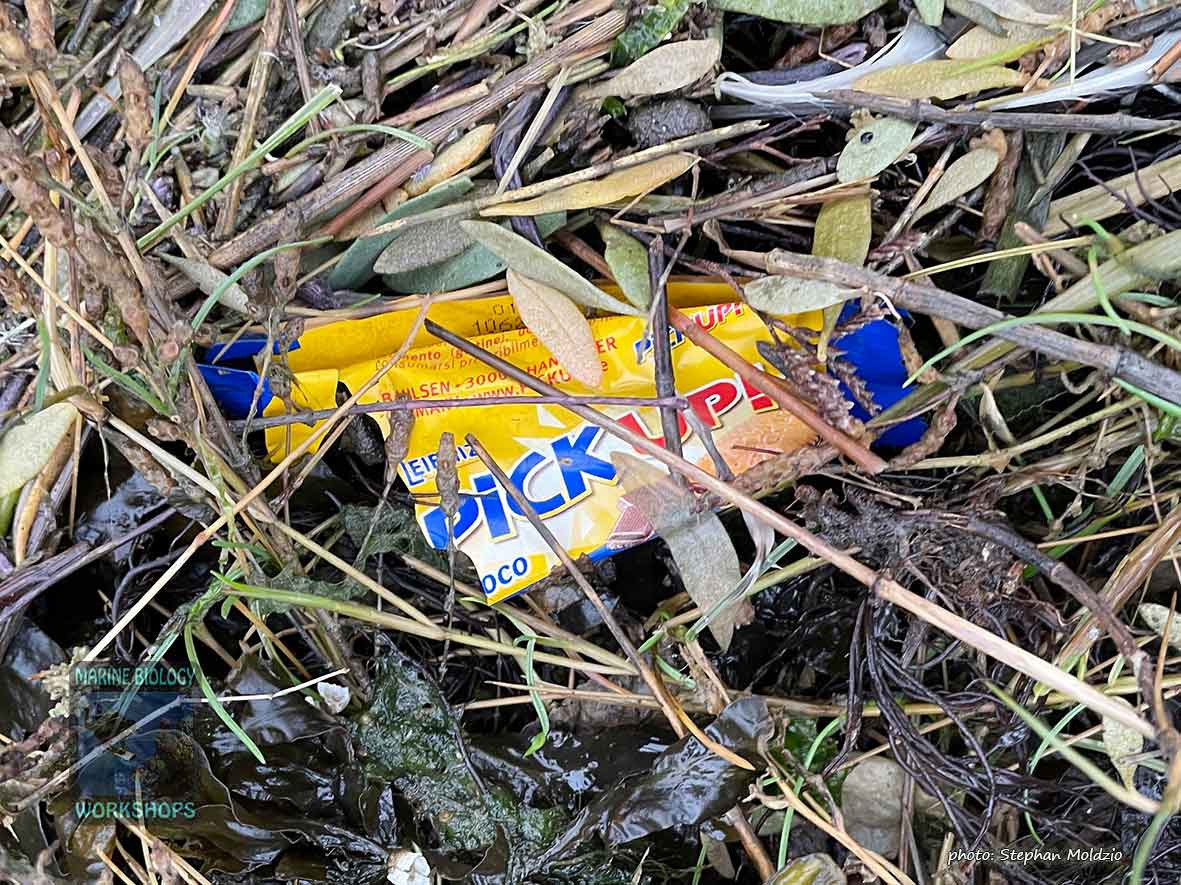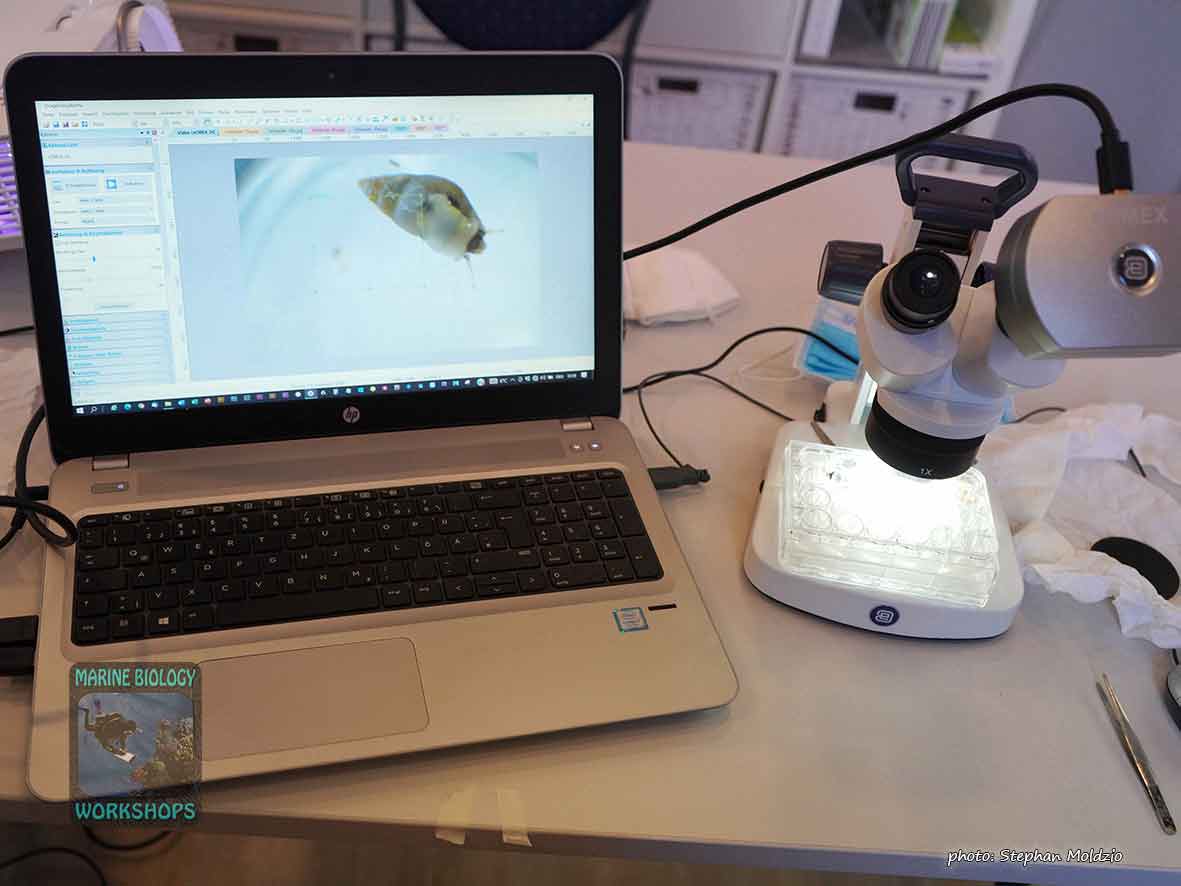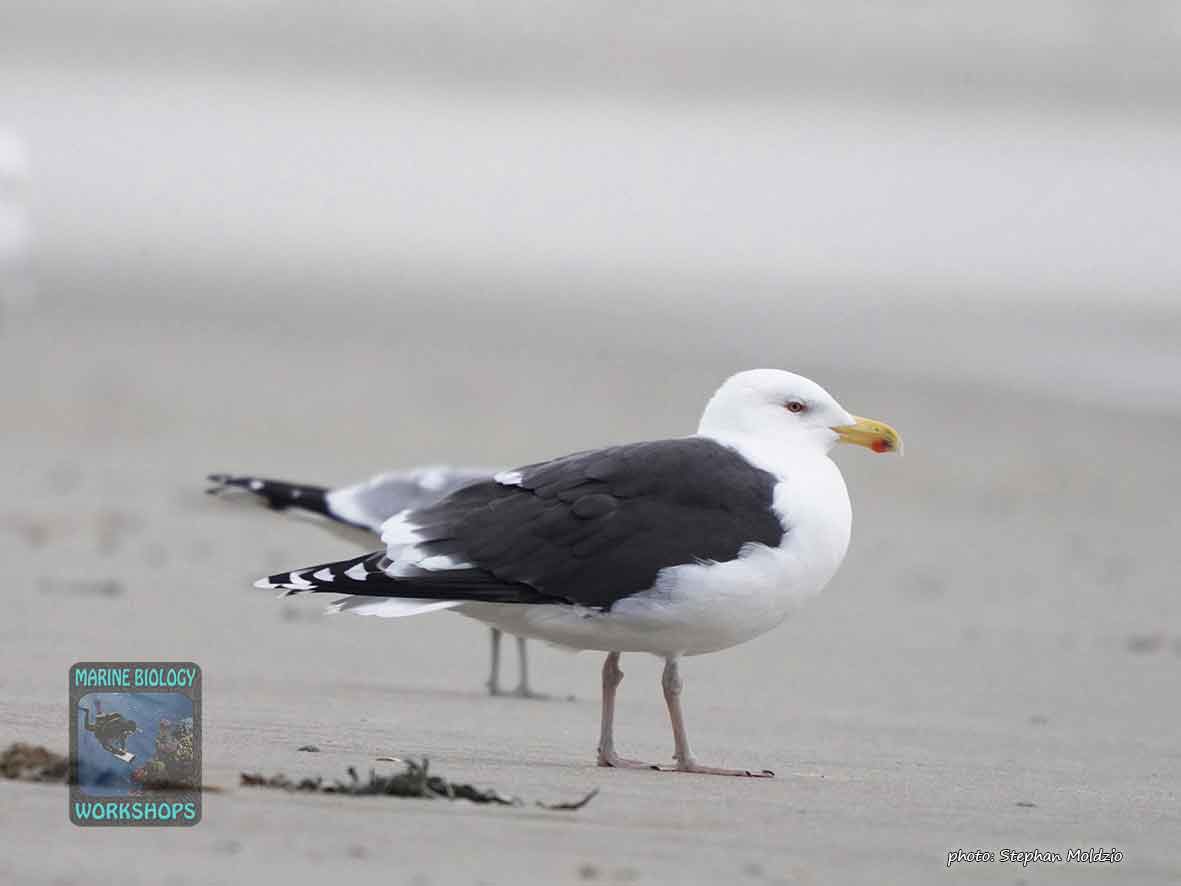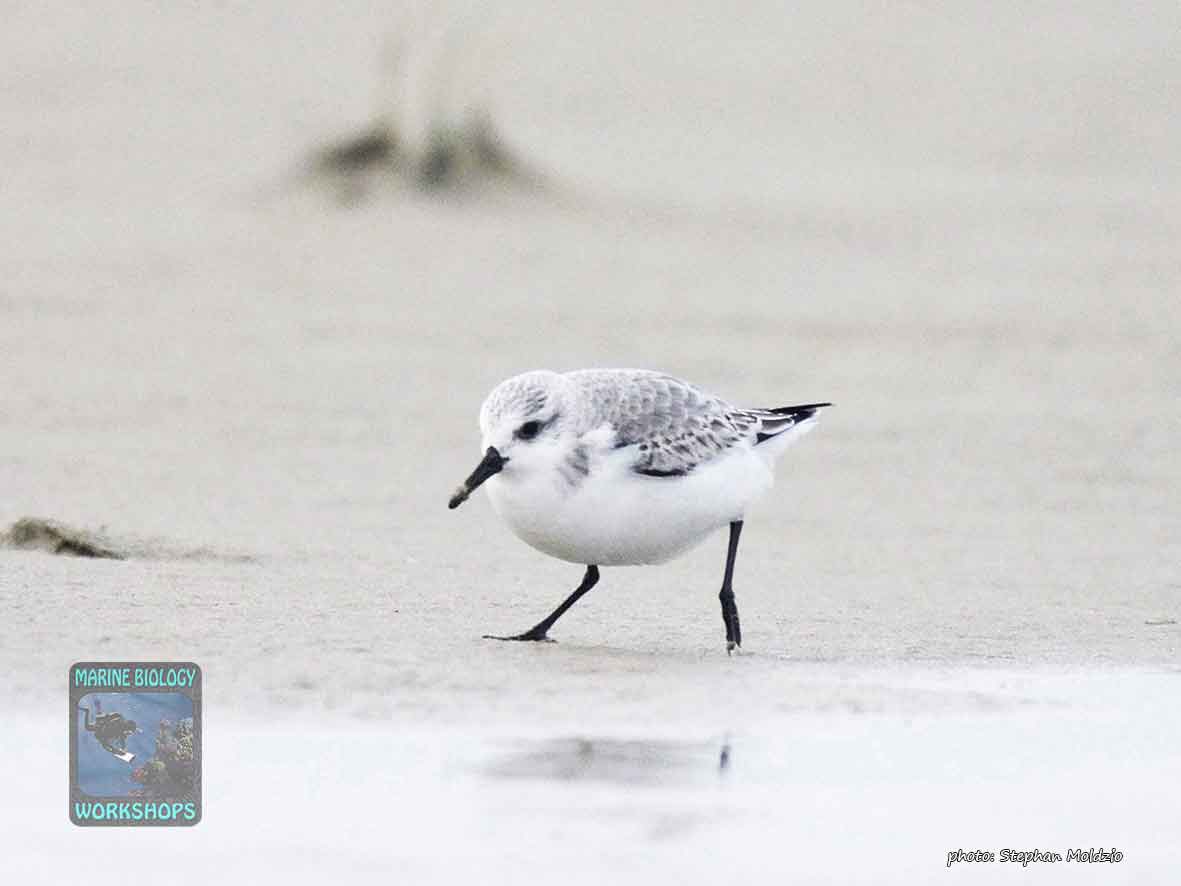The marine ecosystem and the threats posed by the production, use and disposal of plastics.
This seminar organised as an educational leave by the “Evangelische Erwachsenenbildung” (EEB) took place at “Haus Justitia” on Norderney from 22 to 27 November 2021. The seminar was led by speakers Dr Peter Strasser and marine biologist Stephan Moldzio – a well-established team with many years of experience working together on numerous seminars. It was about plastics in the ocean and their impact on marine life and ultimately on us humans.

Water analysis of the harbour basin
In addition to the focus on plastic, we were also interested in other forms of waste and pollution caused by human activities in the marine environment. Immediately on arrival at Norderney by ferry, we took a water sample from the harbour basin for laboratory analysis using ICP-OES mass spectroscopy.
The three reagent tubes were immediately placed in an envelope at the harbour and sent to the laboratory. The analysis results were available towards the end of the seminar and revealed a remarkable accumulation of heavy metals:
Compared to the natural concentrations of trace elements in seawater, which are essentially constant depending on the salinity, aluminium was increased 735-fold, iron 110-fold, copper 17-fold, zinc 14-fold, cadmium and nickel 9-fold and manganese 3-fold. However, lead and mercury were not detectable.
It is possible to speculate as to what objects, ships, metal structures, batteries thrown into the harbour basin are responsible for these elevated levels. What is certain is that this serious accumulation of heavy metals in the harbour basin is of human origin.
We started by looking at the sea as a habitat using the North Sea as an example.
-
What is the ocean`s role global material ccles and climate?
-
How does it affect us humans, and what ecosystem services does it provide for our lives?
Of course, outdoor activities were also on the agenda – a hike, a bike ride and a photo outing. Norderney is the second largest of the East Frisian islands in the Wadden Sea “National Park Watenmeer”, with an interesting history, many places of interest and excursions.
The entire island, with the exception of the settlement and infrastructure areas, is part of the National Park and is protected. The eastern half is uninhabited – a beautiful, wild natural landscape – sand and mud flats, tidal flats, salt marshes, white and grey dunes.
A habitat for fascinating flora and fauna, including many endangered species.
The landscape is in a constant state of flux due to ebb and flow, sun, rain and wind.
The seal bank (a mixed colony of harbour seals and grey seals) and the ‘wreck’ are at the far eastern end of the island. These can only be reached by walking 6 km, there are no tarmac roads and cycling is not allowed.
The 140-hectare „Südstrandpolder“ bird sanctuary is not open to the public, but you can watch the birds from a hide run by the environmental organisation NABU.

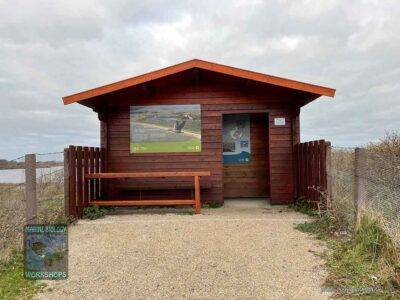

At the National Park Centre ‘Watt Welten’ we visited a very vivid exhibition about waste and the sea with interesting information about marine litter. This gave us a good overview.
During the first two days, we looked at various issues in more detail, such as
-
What are plastics?
-
What are they used for in everday life and business, what resources and processes are used to produce them?
-
How much are we using and the big question:
-
What happens to plastics AFTER they are used?
-
What is the best thing to do with `rubbish´ that does not decompose?
“Rubbish” does not exist in nature, it is an invention of ‘modern industrial society’. Bury it in landfills? Turn it into toxic fine dust in incinerators? Or simply export it abroad? At best, some of it is recycled and reused. At worst, it ends up in the environment, in rivers or in the sea, via various pathways, with a wide range of effects on living organisms.
Litter monitoring according to the OSPAR protocol
In the practical part, we carried out monitoring of marine litter according to the OSPAR protocol ‘Guideline for Monitoring Marine Litter on the Beaches in the OSPAR Maritime Area’ along two randomly selected 100m transects near the fishing harbour on the south coast. Equipped with (compostable) bags and hopefully reasonably waterproof footwear, the litter pickers and mudflat scavengers set to work in the fresh weather. After an hour, we had what we wanted: lots of different types of marine litter.
Litter:
No litter:
Examination of the collected litter
Back in the seminar room, the collected rubbish was then inspected.
Firstly, it was sorted into trays according to the different material categories of the OSPAR protocol, e.g. plastic waste, sanitary waste, fishery waste, etc. The waste was then counted and recorded accordingly.
The waste items were then counted and recorded in the logbook.
The logbook and the data from the litter monitoring can be sent in and will then be entered into a database on the occurrence of litter in the North Sea.
It was amazing for us to see the different ‘types’ of litter that find their way into the sea or onto the coast. And also the large number of objects on just two 100 metre stretches of beach, collected in 1 hour each…
Sampling of mudflats & sandflats
At the same place where we collected the rubbish, we took a sample from the mudflats and sandflats with a sampling tube to analyse the sandflat fauna under the microscope.
After a bit of work with a tube and a sieve, we ended up with several screw-top jars of silt and sand samples from different places.
Study of the sand gap fauna
Back in the seminar room, the first task was to prepare the mudflat samples for examination under the stereomicroscope.
The dark grey, anoxic silt sample was relatively unspectacular, as no living organisms other than bacteria can survive without oxygen, and larger, burrowing organisms that get their oxygen from the surface, such as the lugworm or various mussels, were absent from our samples.

The sand sample was sifted into different fractions and we were able to observe numerous small creatures – the so-called sand gap fauna!
Stephan showed the creatures – including amphipods, clams, snails and nematodes – live to all the participants using a CCD camera and projector connected to the stereo microscope.
In the accompanying presentation, much was learned about this interesting life between the grains of sand: for the various adapted groups of organisms, often with elongated body shapes, the grain size of the sand is one of the most important parameters of their environment.
There was also a small observation aquarium with some larger intertidal creatures (snails, mussels, crabs, worms) which could also be examined.
Stephan had collected these in the morning from the groyne (a stone wall in the sea to protect the coast). They were returned to the sea in the evening.
Possible solutions to the waste problem?

The last two days of the seminar then focused on possible solutions to the waste problem:
-
Are there alternative materials, what are the possibilities and limitations of the circular economy?
-
Can plastic waste be eliminated or at least drastically reduced through sustainable product design?
-
How can the waste problem be tackled – through incentives for individuals and businesses, or through government control?
After a presentation on the topic, participants could choose between a ‘reading room’ and an ‘excursion’. In the reading room, everyone was able to explore the topic of waste with the help of various literature.
Excursion north coast
During the photo excursion, we rode our borrowed bicycles to the White Dune on the north coast to photograph various seabirds with a telephoto lens.
And to feel the fresh November breeze in your face. To enjoy the sea, the beach and the dynamic dune landscape.On the last day we concluded the seminar with a final discussion and feedback session before heading back home by bus, ferry, train or car.

